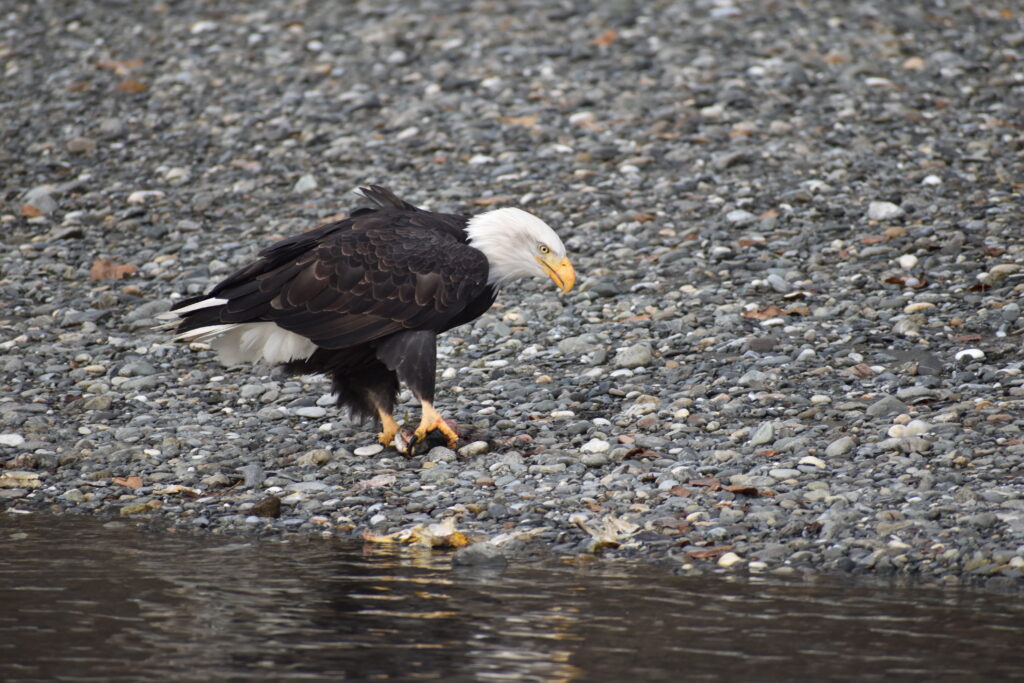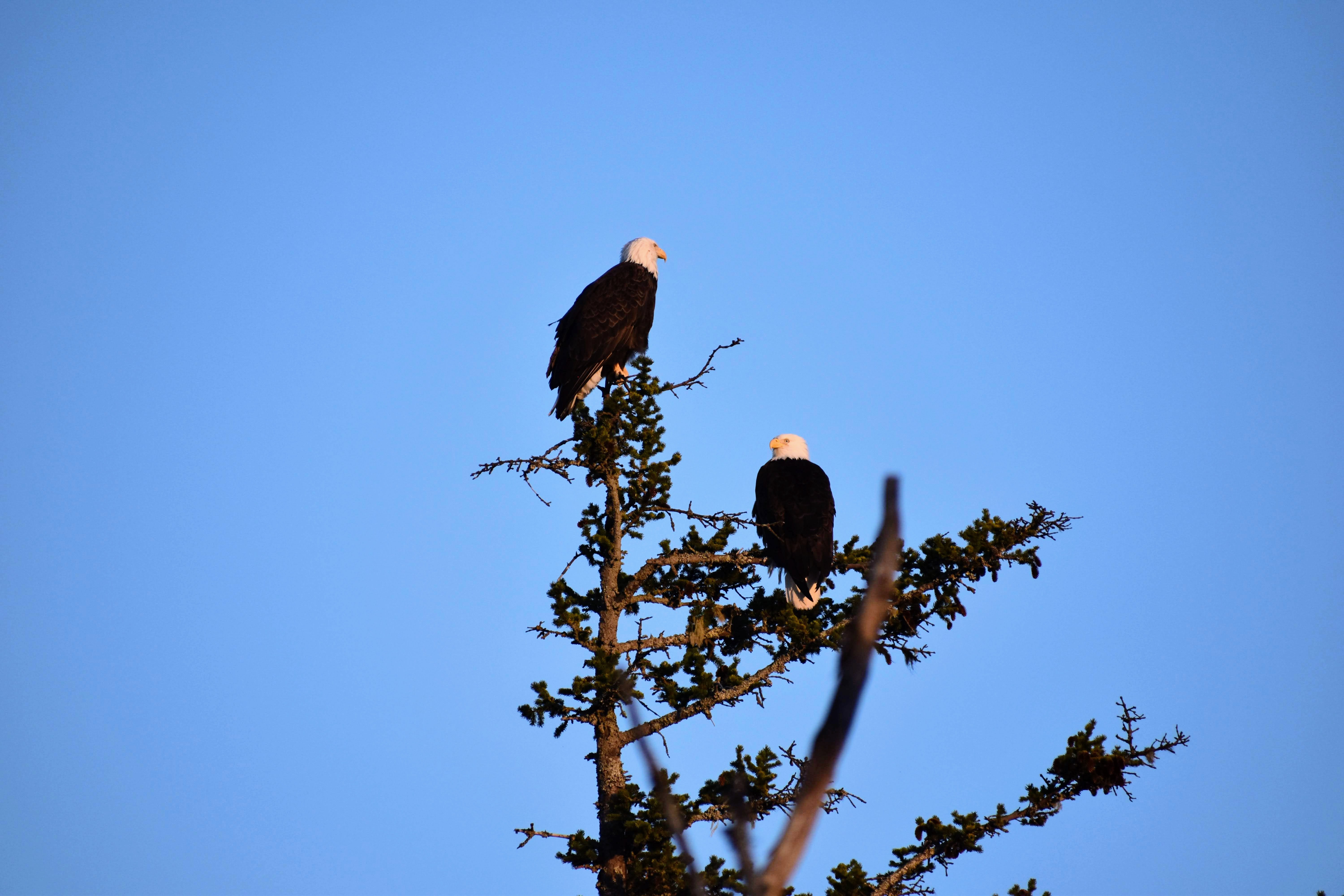
One of the largest birds you may see flying around this summer is the bald eagle. They have a 6 foot wingspan and can weigh up to 14 pounds, making them one of the largest raptors here in Maine. Their striking white head and tail against a dark brown body is their most identifiable characteristic.
Bald eagles are sea eagles, meaning they spend most of their time around bodies of water. Fish are their preferred meal, but these opportunistic carnivores will often be seen scavenging or fighting others for food instead of catching it themselves.
Bald eagle populations declined in the 1970s due to a widespread pesticide called DDT. When used, DDT would run into the waterways and pollute the fish that the eagles were eating, which in turn entered the eagle’s system. The DDT affected the way their bodies processed calcium, so when they laid eggs the shells were misshapen and weak. The eggs were easily crushed when parents tried to incubate them and no new eagles were being added to the population.
Bald eagles were listed as endangered, DDT was banned, and through restoration efforts they were de-listed in 2007 but still remain a heavily protected species. Their biggest threat is currently lead poisoning, which comes from lead fishing weights discarded in waterways and from lead shot left in gut piles from hunting. The easiest way to protect these incredible birds is to use lead alternatives when hunting and fishing.
Whether perched in a tree or soaring through the sky, these iconic birds are always a delight to spot. Keep an eye out when you’re spending time near the water for this national symbol!

